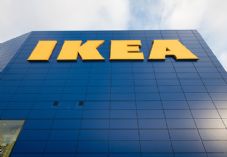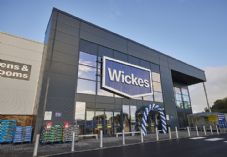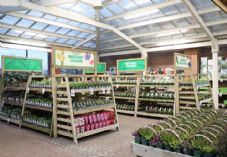International DIY News
Wesfarmers ventures outside its comfort zone

The prospective $700 million Wesfarmers’ acquisition of the UK’s Homebase hardware group represents a marked departure from the group’s past strategies as it searches for new growth opportunities.
For much of its recent history the group has stuck firmly to its conglomerate model and, while occasionally toying with the idea of offshore expansion, has assessed the risks and rewards and concluded that it was safer and easier to remain close to home.
Post-Coles (and the Kmart, Target and Officeworks business acquired with Coles), however, Wesfarmers has become less of a diversified conglomerate and far more of a retail business, albeit that it has managed the brands quite independently, with a conglomerate’s management philosophy.
It was, however, perhaps inevitable that the $45 billion group would, because of the dearth of obvious remaining attractive opportunities within this market for transactions that would move its dials, eventually have to see whether its model and capabilities could be exported.
The approach to Britain’s Home Retail Group, seeking to acquire its Homebase home improvement business, reflects the traditional Wesfarmers approach of thinking big but trying to manage the risks.
It isn’t surprising that the group’s first offshore venture, assuming it is successful in acquiring Homebase, is in the home improvement space.
Wesfarmers’ Bunnings business would be among the world’s most profitable retailers, with sales of nearly $10bn a year, earnings before interest and tax (EBIT) of about $1bn, an EBIT margin of about 11.5 per cent and a return on capital of 33.5 per cent.
The success of John Gillam and his team in, not just successfully countering the threat posed by Woolworths and Lowe’s attempt to attack their dominance of the big box hardware sector through their Masters joint venture, but embarrassing and destabilising Woolworths in the process, has confirmed how strong both the Bunnings management and model are and presumably has given Richard Goyder and his board confidence that exporting the model is a risk worth taking.
Homebase, the second-largest home improvement business in the UK, is a renovation opportunity. It isn’t a well-performing business and is in the midst of a restructuring and downsizing by its parent Home Retail Group, which is itself being stalked by another big UK retailer, Sainsbury’s. Sainsbury’s has made it clear it is interested in the group’s general merchandise business, not Homebase, which it would sell.
It isn’t surprising, given the performance of Homebase and the shadow of Sainsbury’s, that Home Retail Group has welcomed Wesfarmers’ interest, describing the £340 million cash price-tag as good value for shareholders that would allow it to focus on its transformation plan for its core brand, Argo.
Home Retail has been shrinking the Homebase store network aggressively in response to sales that have flatlined (at about £1.5bn, or $3bn) for a decade. The business’ underlying earnings of about £114 million a decade ago (about $236m at current exchange rates) have tumbled to only £19.8m (about $40m) last financial year.
Part of the problem — and presumably the perceived opportunity for Wesfarmers — appears to be that Homebase has a market positioning oriented towards affluent households and female customers, with an offering that Home Retail created to try to leverage off its general merchandise base. It appears, from a distance, to be more like a cross between Masters and Harvey Norman than a Bunnings.
That positioning has allowed the biggest of the UK home improvement chains, B&Q, to dominate the DIY market and have a strong position in trade hardware, where the other major chain, Wickes, appears to be strongest. The segment Homebase appeals to clearly hasn’t driven sales or profit growth.
That presumably represents the renovation plan.
In its announcement of its offer for Homebase, Wesfarmers said the acquisition, if it occurred, would be the first step in a program under which it would invest in the Homebase team and reinvigorate its core assets to build an “exciting Bunnings-branded business” over three to five years.
It described Homebase as an established and scalable platform with stores that were the right size for the UK market and which supported warehouse marketing and a low cost operating model.
The branding and the outline of the strategy, says Wesfarmers, plans to try to reproduce the successful Bunnings warehouse model in the UK. Bunnings has a global supply chain that fundamentally runs south; it ought to be able to leverage its existing relationships with suppliers to add a new pathway into the UK.
While Wesfarmers’ approach has been welcomed, an exclusivity agreement signed, due diligence completed and transaction documentation is being finalised, Wesfarmers warned there was no certainty its offer would lead to an agreed transaction.
It may be overly-cautious, given that Home Retail is already foreshadowing how it plans to distribute the proceeds (£200m pounds of it would be returned to shareholders) but an agreed deal does have to be ratified by Home Retail shareholders and Sainsbury’s is in the background, albeit that it is probably pleased to see the bit of Home Retail it doesn’t want dealt with.
Assuming the deal is completed, Wesfarmers has its first offshore beachhead in a segment of retail where it would be most confident in its skills and capabilities, with an initial exposure that is very digestible for a group with a market capitalisation of $45bn and an under-leveraged balance sheet.
The need to rebrand, re-position and expand Homebrand to replicate the Bunnings model will require continuing and potentially sizeable lumps of capital, but the pay-off would be a new and very large growth option.
B&Q, part of the Kingfisher group, is Europe’s biggest home improvement retailer and third-largest in the world. Its sales last financial year (to March last year) were about $8bn and it had earnings of about £276m ($570m).
Its parent has estimated the size of the larger European home improvement market at close to $500bn a year. Despite its size, Kingfisher has only about 5 per cent of what is a highly fragmented European market.
There is, therefore, a big opportunity for Wesfarmers if the Bunnings model can be successfully deployed in the UK.
If it can, of course, the debate about Wesfarmers’ conglomerate model will intensify. The sale of its insurance businesses, the shrinking of its coal earnings, the relatively small scale of its other industrial businesses and the success and growth of its portfolio of big retail brands, means it is now predominantly a retail business.
Success in the UK would only underscore that absolute dominance of retailing within Wesfarmers’ portfolio of businesses, while also potentially opening up other opportunities to grow in the UK and European retail sector if Bunnings demonstrates its capabilities are transferable and competitive.
Success would also, moreover, enable Wesfarmers to redefine itself and its strategies and position itself as a conglomerate of retail businesses, here and offshore, without changing the financially disciplined but decentralised model that has been so successful for it.
Source: The Australian.com
Read the full article here.
Thank you for the excellent presentation that you gave at Woodbury Park on Thursday morning. It was very interesting and thought-provoking for our Retail members. The feedback has been excellent.











































